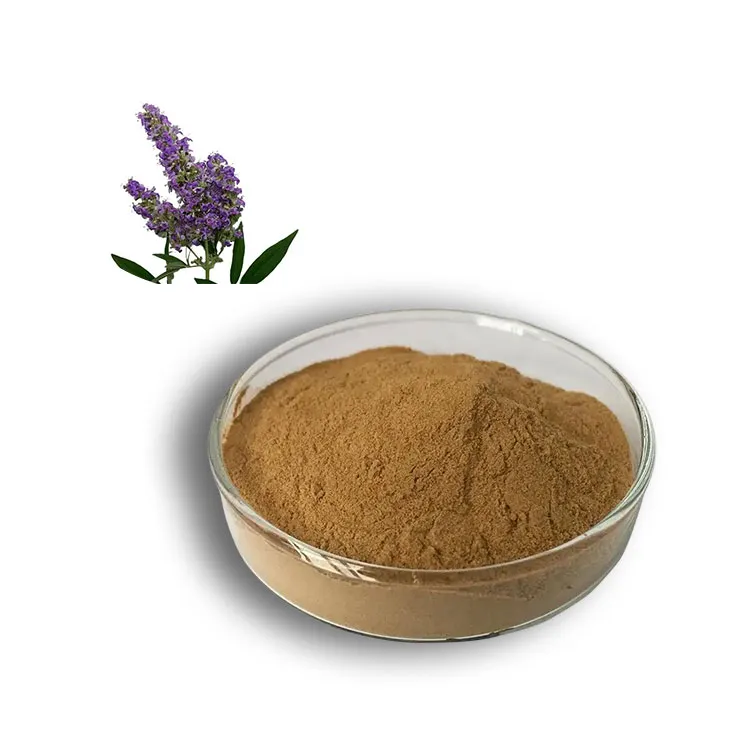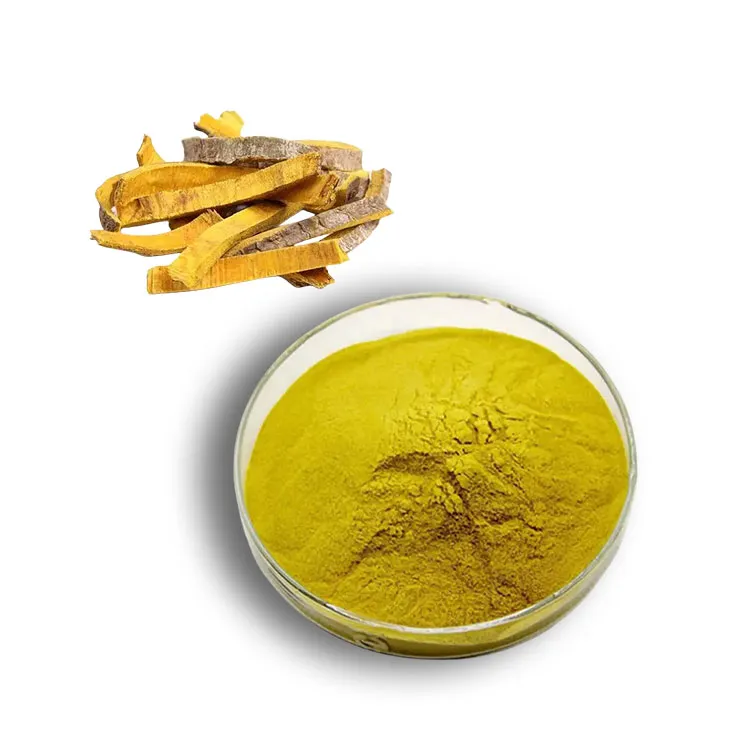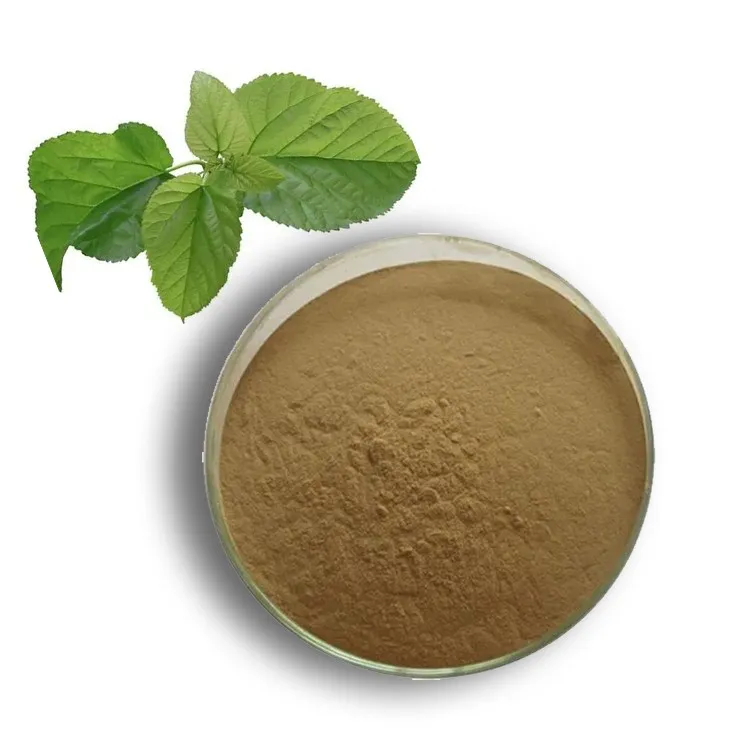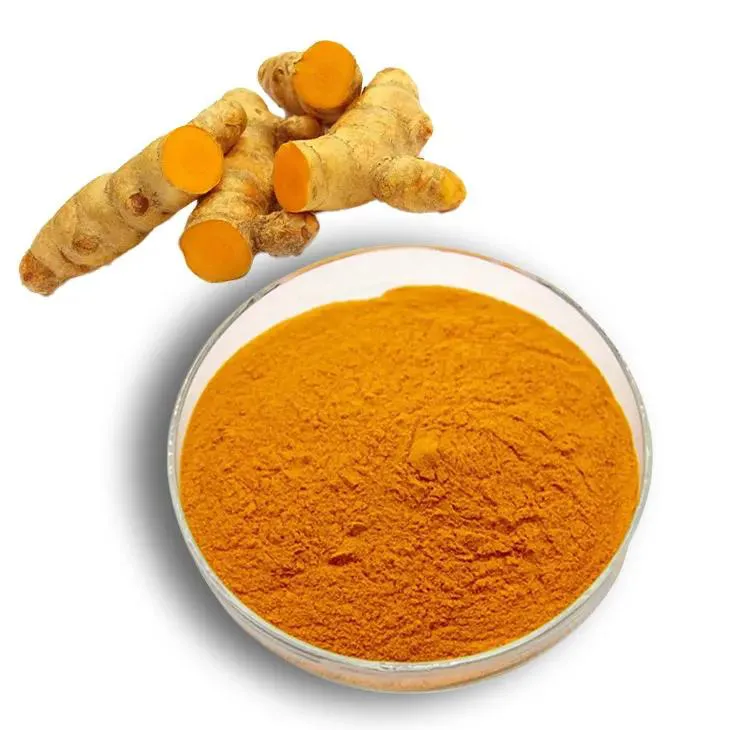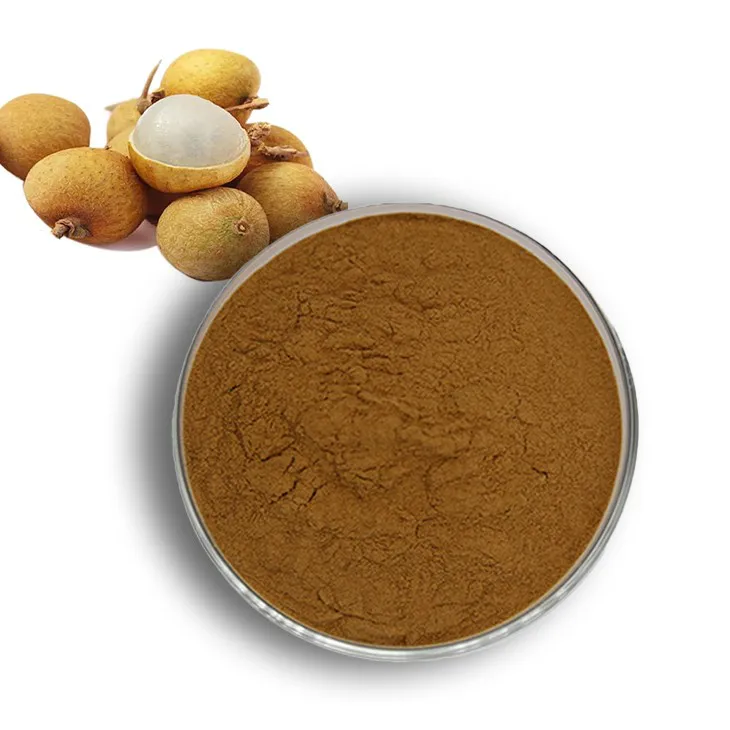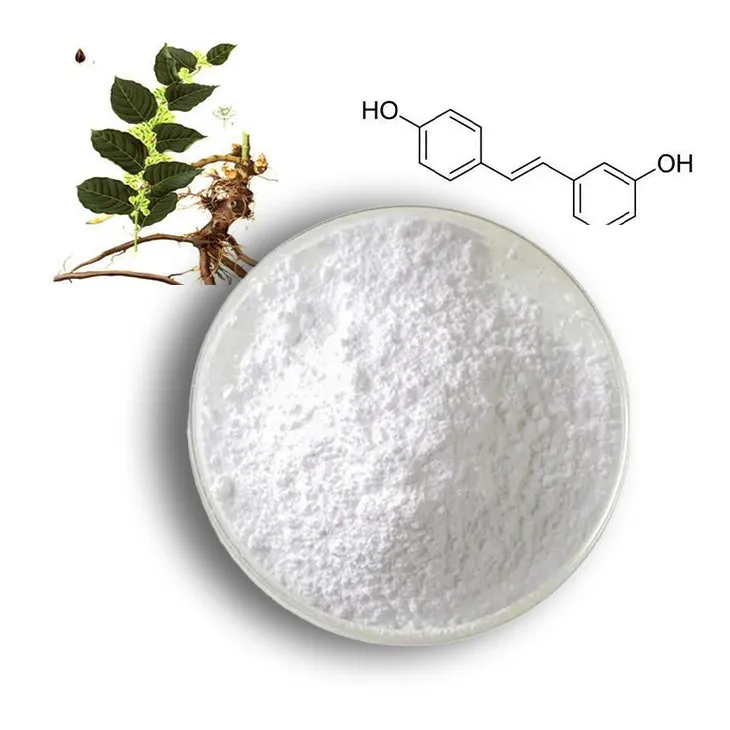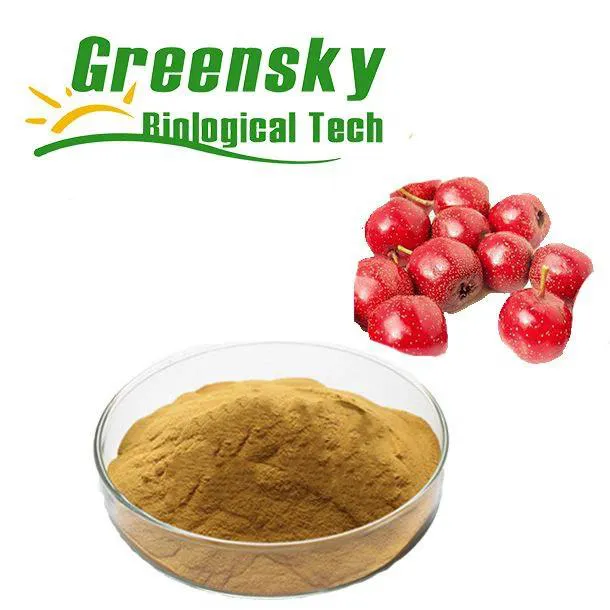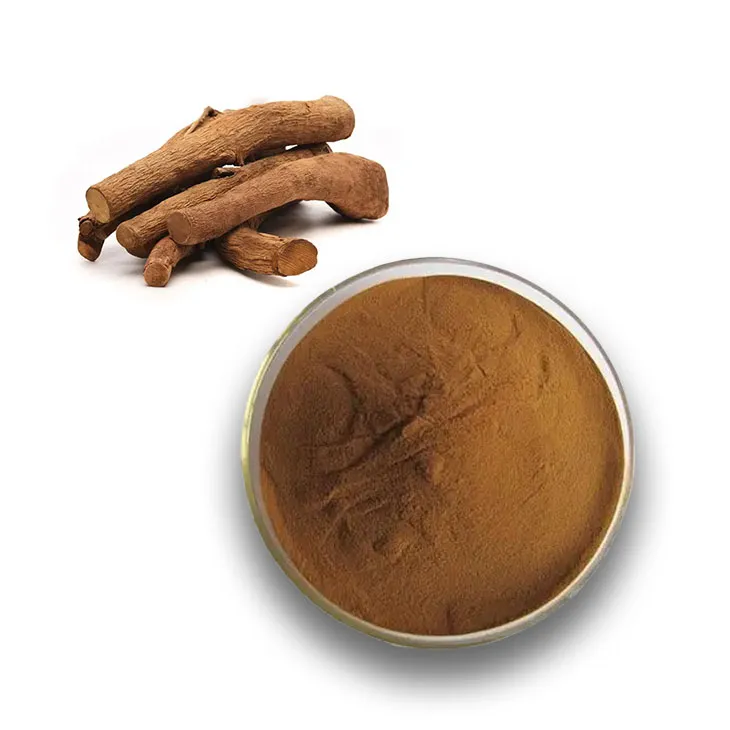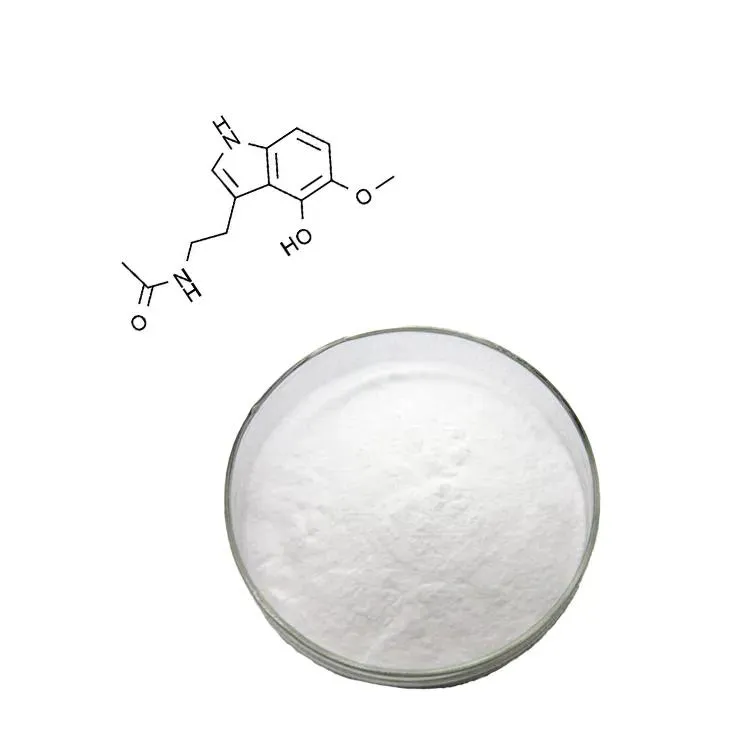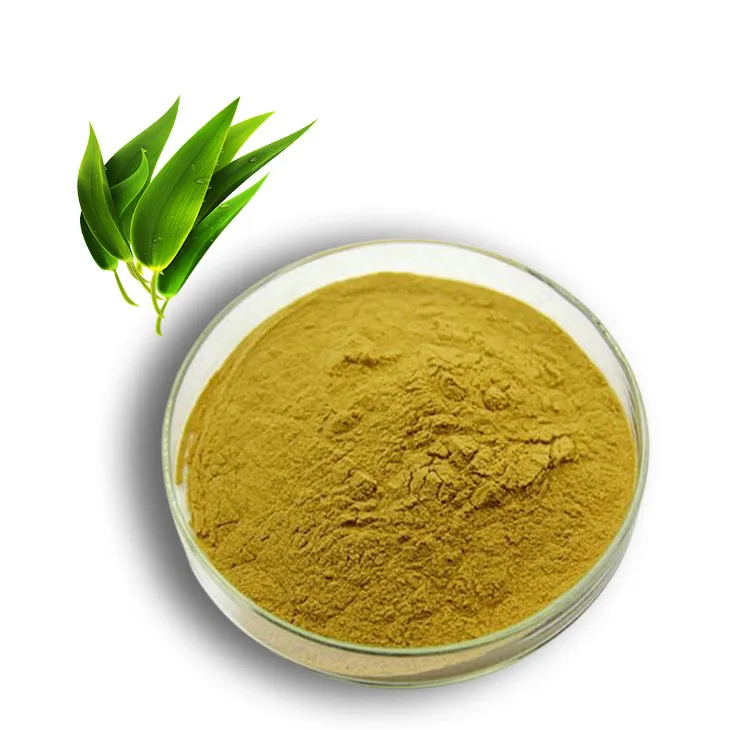- 0086-571-85302990
- sales@greenskybio.com
buy plant extracts
2023-09-26
1. Benefits of Using Plant Extracts
1. Benefits of Using Plant Extracts
Plant extracts have been a cornerstone of traditional medicine and wellness practices for centuries. They are derived from various parts of plants, such as leaves, roots, bark, seeds, and flowers, and are known for their rich bioactive compounds. Here are some of the key benefits of using plant extracts:
1. Natural Alternatives: Plant extracts offer a natural alternative to synthetic chemicals and pharmaceuticals, which can sometimes have unwanted side effects.
2. Health Benefits: Many plant extracts are rich in vitamins, minerals, and antioxidants that can support overall health and well-being.
3. Anti-Inflammatory Properties: Some plant extracts have potent anti-inflammatory properties that can help alleviate conditions like arthritis and other inflammatory disorders.
4. Antioxidant Activity: Antioxidants in plant extracts can neutralize free radicals, potentially reducing the risk of chronic diseases and promoting skin health.
5. Antimicrobial Properties: Certain plant extracts have been found to possess antimicrobial properties, useful in treating infections and maintaining hygiene.
6. Flavor and Fragrance: In the food and beverage industry, plant extracts are used to add natural flavors and fragrances to products, enhancing taste and aroma without artificial additives.
7. Cosmetic Applications: Plant extracts are widely used in the cosmetic industry for their skin-nourishing and beautifying properties, often providing a natural alternative to harsh chemicals.
8. Agricultural Use: In agriculture, plant extracts can serve as natural pesticides or growth enhancers, promoting healthier crop growth with less environmental impact.
9. Sustainability: Using plant extracts is often more sustainable than synthetic alternatives, as they are renewable and can be sourced from a wide variety of plants.
10. Research and Development: Plant extracts are a rich source of bioactive compounds for research into new pharmaceuticals, nutraceuticals, and other health-related products.
By incorporating plant extracts into various aspects of daily life, from healthcare to personal care and agriculture, we can benefit from their natural properties while also promoting a more sustainable and eco-friendly approach to product development.
2. Types of Plant Extracts Available
2. Types of Plant Extracts Available
Plant extracts are derived from various parts of plants, such as leaves, roots, flowers, seeds, and bark, and they are used for their medicinal, nutritional, or aromatic properties. Here are some of the most common types of plant extracts available:
1. Green Tea Extract: Rich in antioxidants, particularly EGCG, which is known for its potential health benefits, including anti-inflammatory and anticancer properties.
2. Ginger Extract: Known for its anti-inflammatory and digestive aid properties, Ginger Extract is commonly used in both culinary and medicinal applications.
3. Ginseng Extract: A traditional medicine used to enhance physical endurance and improve mental function, ginseng extract is valued for its adaptogenic properties.
4. Garlic Extract: With potent antimicrobial properties, garlic extract is used to support the immune system and cardiovascular health.
5. Eucalyptus Extract: Often used for its decongestant and anti-inflammatory properties, eucalyptus extract is popular in respiratory health products.
6. Cranberry Extract: Known for its ability to prevent urinary tract infections, cranberry extract is rich in proanthocyanidins.
7. Grape Seed Extract: High in proanthocyanidins and antioxidants, grape seed extract is used for its potential cardiovascular and skin health benefits.
8. Turmeric Extract: Containing the active compound Curcumin, turmeric extract is widely used for its anti-inflammatory and potential anticancer properties.
9. St. John's Wort Extract: Traditionally used for treating mild to moderate depression, St. John's Wort extract contains hypericin and hyperforin, which are believed to contribute to its mood-enhancing effects.
10. Pomegranate Extract: Rich in antioxidants, pomegranate extract is used for its potential benefits to heart health and skin.
11. Saw Palmetto Extract: Commonly used to support prostate health, saw palmetto extract is believed to have anti-inflammatory and hormone-balancing effects.
12. Moringa Extract: Known as the "miracle tree," moringa extract is rich in vitamins, minerals, and antioxidants, and is used for its wide range of health benefits.
13. Passionflower Extract: Used to promote relaxation and improve sleep quality, passionflower extract is valued for its calming effects.
14. Yohimbe Extract: Derived from the yohimbe tree, this extract is used for its potential to enhance sexual function and support weight loss.
15. Valerian Root Extract: Known for its calming and sleep-promoting properties, valerian root extract is used to treat insomnia and anxiety.
16. Bilberry Extract: Similar to blueberry, Bilberry Extract is rich in anthocyanins and is used to support eye health and improve night vision.
17. Feverfew Extract: Used to prevent migraines and reduce inflammation, feverfew extract contains compounds that may help to stabilize blood vessels.
18. Hops Extract: Known for its use in beer production, hops extract also has sedative and sleep-promoting properties.
19. Peppermint Extract: With a refreshing aroma and cooling sensation, peppermint extract is used for digestive support and to alleviate headaches.
20. Aloe Vera Extract: Known for its soothing and healing properties, aloe vera extract is used in skincare products and for internal health benefits.
These plant extracts can be found in various forms, such as powders, oils, capsules, and liquid solutions, and are used across a wide range of industries, including pharmaceutical, cosmetic, food and beverage, and nutraceutical.
3. How to Choose the Right Plant Extract
3. How to Choose the Right Plant Extract
When it comes to selecting the right plant extract for your needs, there are several factors to consider. Here are some key points to help you make an informed decision:
1. Purpose of Use:
- Determine the primary reason you need the plant extract. Is it for medicinal purposes, skincare, food flavoring, or another application? The intended use will guide you in choosing the most suitable type of extract.
2. Source Material:
- The plant species from which the extract is derived plays a crucial role in its properties and effectiveness. Research the plant species to ensure it aligns with your requirements.
3. Quality and Purity:
- Look for plant extracts that have been tested for quality and purity. Certificates of Analysis (COAs) can provide assurance that the product meets industry standards.
4. Extraction Method:
- Different extraction methods can affect the composition and potency of the extract. Common methods include solvent extraction, steam distillation, and cold pressing. The method used should be appropriate for the specific plant material and the desired outcome.
5. Concentration:
- The concentration of active ingredients in the extract can vary widely. Higher concentrations may be more effective but could also be more expensive or require careful handling.
6. Solubility:
- Consider the solubility of the extract in your intended medium, whether it's water, oil, or another substance. This will affect how well the extract can be incorporated into your product.
7. Regulatory Compliance:
- Ensure that the plant extract complies with relevant regulations and safety standards in your region or industry. This includes checking for any restrictions or requirements for labeling and usage.
8. Sustainability and Ethical Sourcing:
- Consider the environmental impact and ethical considerations of the plant extract's production. Choose suppliers who prioritize sustainable practices and fair trade.
9. Price and Availability:
- While price should not be the only determining factor, it is essential to find a balance between cost and quality. Also, consider the availability of the extract, especially if you require it in large quantities.
10. Reviews and Recommendations:
- Look for reviews from other users or professionals in your field. Recommendations from trusted sources can provide valuable insights into the effectiveness and reliability of a particular plant extract.
By taking these factors into account, you can make a well-informed decision when choosing the right plant extract for your specific needs. Always consult with professionals or conduct thorough research to ensure the safety and efficacy of the plant extracts you select.
4. Applications of Plant Extracts in Various Industries
4. Applications of Plant Extracts in Various Industries
Plant extracts have found their way into a multitude of industries due to their diverse properties and applications. Here's a detailed look at some of the key sectors where plant extracts are utilized:
Pharmaceutical Industry:
Plant extracts have been a cornerstone of traditional medicine for centuries. Today, they continue to play a vital role in the pharmaceutical industry, serving as raw materials for the development of new drugs and herbal supplements. They are used for their medicinal properties, such as anti-inflammatory, analgesic, and antimicrobial effects.
Cosmetics and Personal Care:
In the cosmetics and personal care industry, plant extracts are valued for their natural fragrances, colors, and therapeutic properties. They are used in a wide range of products, including skincare, hair care, and makeup, to provide nourishment and protection, as well as to enhance the sensory experience of the products.
Food and Beverage:
Plant extracts are used to add flavor, color, and nutritional value to food and beverages. They are found in everything from spices and condiments to functional beverages and dietary supplements. Examples include vanilla and cinnamon extracts in food products, and green tea and ginseng extracts in beverages.
Agriculture:
In agriculture, plant extracts are used as natural pesticides and growth promoters. They can help protect crops from pests and diseases while also promoting healthy growth. Some plant extracts have been found to be effective in repelling insects and improving soil health.
Textile Industry:
Plant extracts are used in the textile industry for dyeing and finishing processes. Natural dyes derived from plants offer a sustainable alternative to synthetic dyes, and certain extracts can enhance the texture and durability of fabrics.
Flavor and Fragrance Industry:
The flavor and fragrance industry relies heavily on plant extracts to create natural and complex scents and tastes. From essential oils used in perfumes to flavor compounds in food products, plant extracts are indispensable in crafting unique and appealing sensory experiences.
Health Supplements:
In the health supplement industry, plant extracts are used to provide concentrated forms of vitamins, minerals, and other beneficial compounds. These supplements are marketed to support various aspects of health, such as immune function, cardiovascular health, and cognitive performance.
Environmental and Biodegradable Products:
As the world moves towards more sustainable practices, plant extracts are being used in the development of biodegradable and eco-friendly products. They are components in biodegradable plastics, cleaning products, and other items designed to reduce environmental impact.
Research and Development:
Plant extracts are extensively used in research for their potential health benefits and as sources of new bioactive compounds. They are studied for their potential to treat various diseases and conditions, as well as for their role in developing new pharmaceuticals and nutraceuticals.
The versatility of plant extracts across these industries highlights their importance in modern society. As research continues to uncover new properties and applications, the use of plant extracts is likely to expand even further, offering innovative solutions to various challenges across different sectors.
5. The Process of Extracting Plant Components
5. The Process of Extracting Plant Components
The process of extracting plant components is a meticulous and scientifically-driven procedure that aims to isolate and preserve the beneficial substances within plants. This process is crucial for ensuring the potency, purity, and effectiveness of the final product. Here is an overview of the steps involved in extracting plant components:
1. Selection of Plant Material: The first step is selecting the appropriate plant species and ensuring that the plant material is of high quality, free from contaminants, and harvested at the optimal time to maximize the concentration of desired compounds.
2. Preparation: The plant material is cleaned and prepared for extraction. This may involve drying, crushing, or grinding the plant to increase the surface area and facilitate the extraction process.
3. Extraction Method: Several methods can be used to extract plant components, including:
- Solvent Extraction: Using solvents like water, ethanol, or hexane to dissolve the desired compounds.
- Steam Distillation: Particularly useful for extracting volatile oils from plants.
- Cold Pressing: Used for extracting oils from fruits and seeds without the use of heat.
- Supercritical Fluid Extraction: Utilizes supercritical fluids, typically carbon dioxide, to extract compounds at high pressures and low temperatures, preserving the integrity of the compounds.
- Ultrasonic Extraction: Uses ultrasonic waves to break plant cell walls and release the desired compounds into a solvent.
4. Concentration: After extraction, the solution may be concentrated to increase the potency of the active ingredients. This can be done through evaporation, filtration, or centrifugation.
5. Purification: The extracted components are further purified to remove any unwanted substances, such as residual solvents, plant debris, or other impurities.
6. Standardization: To ensure consistency and quality, the extracted plant components are standardized to contain a specific amount of the active ingredient(s). This is often done through chromatography or other analytical methods.
7. Formulation: The purified and standardized extracts are then formulated into various products, such as capsules, tablets, creams, or oils, depending on the intended application.
8. Quality Control: Throughout the extraction process, rigorous quality control measures are implemented to ensure the safety, efficacy, and purity of the final product. This includes testing for contaminants, verifying the presence of active ingredients, and ensuring the product meets all regulatory standards.
9. Packaging and Storage: The final product is packaged to protect it from light, heat, and moisture, which can degrade the active components. Proper labeling is also essential for traceability and consumer information.
10. Distribution: The plant extracts are then distributed to various industries, such as pharmaceutical, cosmetic, food and beverage, and agricultural sectors, where they are used in a wide range of applications.
Understanding the process of extracting plant components is essential for appreciating the complexity and care that goes into producing high-quality plant extracts. It also highlights the importance of choosing reputable suppliers who adhere to strict standards and practices throughout the extraction process.
6. Quality Control and Safety Standards
6. Quality Control and Safety Standards
Quality control and safety standards are paramount when it comes to the production and use of plant extracts. Ensuring the purity, potency, and safety of these products is crucial for both the consumer and the environment. Here's a detailed look at the various aspects of quality control and safety standards in the plant extract industry:
Regulatory Compliance:
- Plant extracts must adhere to the regulations set by health and safety authorities such as the FDA, USDA, and EU regulations. Compliance with these standards ensures that the products are safe for human and animal consumption and do not pose any health risks.
Standard Operating Procedures (SOPs):
- Manufacturers of plant extracts follow strict SOPs to maintain consistency and quality in their products. These procedures cover every step of the production process, from sourcing raw materials to final packaging.
Testing and Analysis:
- Rigorous testing is conducted at various stages of production to ensure the extracts meet the required specifications. This includes testing for active ingredients, contaminants, and microbial load. Chromatography, spectroscopy, and other analytical methods are used to verify the composition and purity of the extracts.
Good Manufacturing Practices (GMP):
- Adherence to GMP is essential for the plant extract industry. These practices ensure that the manufacturing process is controlled and monitored to minimize the risk of contamination and ensure product quality.
Traceability and Documentation:
- A robust traceability system allows for the tracking of products from raw material to finished product. This is important for recalling products if necessary and for maintaining transparency with consumers.
Certifications:
- Many plant extract suppliers and manufacturers seek certifications such as organic, fair trade, and non-GMO to assure customers of their commitment to quality, safety, and ethical sourcing.
Safety Data Sheets (SDS):
- SDS are provided for each plant extract, detailing the potential hazards, safe handling procedures, and first-aid measures. This is crucial for users to understand the risks associated with the product and how to handle them safely.
Continuous Improvement:
- The industry is continuously evolving, with new technologies and methods being developed to improve the quality and safety of plant extracts. Manufacturers invest in research and development to stay ahead of safety concerns and to improve their products.
Training and Education:
- Employees involved in the production, handling, and distribution of plant extracts are trained in safety protocols and best practices. This ensures that everyone involved in the process is knowledgeable about the importance of quality control and safety.
Consumer Awareness:
- Manufacturers also play a role in educating consumers about the safe use of plant extracts. This includes providing clear instructions for use and highlighting any potential risks or side effects.
By maintaining high standards of quality control and safety, the plant extract industry can continue to provide beneficial products to consumers while minimizing any potential risks. This commitment to safety and quality is a testament to the industry's dedication to protecting both people and the environment.
7. Environmental Impact of Plant Extract Production
7. Environmental Impact of Plant Extract Production
The production of plant extracts has both positive and negative environmental impacts. It is essential to understand these effects to ensure sustainable practices in the industry.
Positive Impacts:
1. Renewable Resource Utilization: Plant extracts are derived from renewable resources, which means they can be replenished over time, reducing the reliance on finite resources.
2. Biodegradability: Many plant extracts are biodegradable, which means they break down naturally in the environment without causing long-term harm.
3. Carbon Sequestration: Plants absorb carbon dioxide during photosynthesis, which helps in reducing the overall carbon footprint of the planet.
4. Support for Biodiversity: The cultivation of plants for extracts can contribute to the preservation of plant species and support biodiversity.
Negative Impacts:
1. Land Use Changes: The cultivation of plants for extracts can lead to deforestation and habitat loss if not managed properly.
2. Water Consumption: The extraction process can require significant amounts of water, which can strain local water resources.
3. Chemical Use: Some extraction methods may involve the use of solvents or chemicals that can be harmful to the environment if not disposed of properly.
4. Eutrophication: Runoff from agricultural lands where plants are grown for extracts can lead to nutrient pollution in water bodies, causing eutrophication.
Mitigation Strategies:
1. Sustainable Agriculture Practices: Implementing organic farming and agroforestry can help maintain soil health and biodiversity while reducing the need for harmful chemicals.
2. Water Conservation: Using water-efficient extraction methods and recycling water where possible can help reduce the environmental impact.
3. Green Chemistry: Adopting green chemistry principles in the extraction process can minimize the use of harmful solvents and reduce waste.
4. Certification and Regulation: Ensuring that plant extract production follows international environmental and sustainability standards can help mitigate negative impacts.
5. Circular Economy: Encouraging the recycling and reuse of by-products from the extraction process can contribute to a more circular economy.
6. Community Engagement: Working with local communities to ensure that plant extract production benefits the local environment and economy can lead to more sustainable practices.
7. Research and Development: Investing in research to find more sustainable extraction methods and to reduce the environmental footprint of the industry.
By understanding and addressing the environmental impact of plant extract production, the industry can work towards a more sustainable future, ensuring that the benefits of plant extracts are enjoyed without compromising the health of our planet.
8. Ethical Considerations in Sourcing Plant Extracts
8. Ethical Considerations in Sourcing Plant Extracts
As the demand for plant extracts continues to grow, ethical considerations in sourcing these natural ingredients have become increasingly important. Consumers and industries alike are becoming more aware of the need for sustainable and responsible practices in the procurement of plant extracts. Here are some key ethical considerations to keep in mind when sourcing plant extracts:
1. Sustainability: Ensure that the plant species being sourced are not endangered or threatened. Sustainable harvesting practices should be employed to maintain the health of the ecosystem and the plant populations.
2. Fair Trade: Support fair trade practices that provide fair wages and working conditions for the people involved in the collection and processing of plant extracts. This helps to promote economic stability and social equity in the communities where these plants are sourced.
3. Biodiversity Conservation: Sourcing plant extracts should not lead to the destruction of natural habitats or the loss of biodiversity. Efforts should be made to protect the natural environment and the species that inhabit it.
4. Traceability: Establishing a clear traceability system from the field to the final product ensures that the plant extracts are sourced ethically and sustainably. This helps to verify the origin of the ingredients and the conditions under which they were harvested.
5. Regulatory Compliance: Adhering to local and international regulations is crucial to ensure that the sourcing of plant extracts does not violate any laws or contribute to illegal activities, such as deforestation or poaching.
6. Community Engagement: Engaging with local communities and indigenous peoples who have traditional knowledge about the medicinal and ecological value of plants is essential. Their consent and involvement should be sought to ensure that their rights and interests are respected.
7. Ethical Certifications: Look for plant extracts that are certified by organizations that promote ethical sourcing, such as the Rainforest Alliance, FairWild, or other relevant bodies. These certifications can provide assurance that the extracts are sourced responsibly.
8. Transparency: Companies should be transparent about their sourcing practices, providing information about the origin of their plant extracts and the measures they take to ensure ethical and sustainable procurement.
9. Environmental Impact: Consider the environmental impact of the entire supply chain, from the cultivation or wild harvesting of plants to the processing and transportation of the extracts. Efforts should be made to minimize the carbon footprint and other environmental impacts.
10. Animal Welfare: In cases where plant extracts are derived from animals, such as beeswax from bees, it is important to ensure that animal welfare standards are upheld and that the animals are not harmed during the extraction process.
By considering these ethical factors, companies and consumers can contribute to a more responsible and sustainable supply chain for plant extracts, ensuring that the benefits of these natural ingredients are enjoyed without compromising the environment, communities, or the future availability of these resources.
9. Future Trends and Innovations in Plant Extracts
9. Future Trends and Innovations in Plant Extracts
The future of plant extracts is promising, with ongoing research and development paving the way for new applications and innovations. Here are some of the key trends and innovations that are expected to shape the industry in the coming years:
9.1 Advanced Extraction Techniques
Technological advancements are leading to the development of more efficient and effective extraction methods. Techniques such as supercritical fluid extraction, ultrasound-assisted extraction, and microwave-assisted extraction are becoming more prevalent, allowing for the extraction of higher quality plant components with reduced environmental impact.
9.2 Personalized Medicine
The rise of personalized medicine is driving the demand for plant extracts that can be tailored to individual needs. This includes the development of plant-based formulations that can address specific health concerns, such as inflammation, anxiety, or sleep disorders, based on an individual's unique genetic makeup and lifestyle factors.
9.3 Sustainable and Ethical Sourcing
As consumers become more aware of the environmental and social impact of the products they use, there is a growing demand for plant extracts that are sourced sustainably and ethically. This includes the use of organic farming practices, fair trade principles, and the protection of indigenous communities and their knowledge of plant-based remedies.
9.4 Nutraceutical and Functional Foods
The trend towards healthier eating and wellness is driving the incorporation of plant extracts into functional foods and nutraceuticals. This includes the development of plant-based protein powders, energy bars, and beverages that are fortified with health-promoting plant components.
9.5 Cosmetic and Personal Care Innovations
The cosmetic and personal care industry is increasingly turning to plant extracts for their natural and beneficial properties. This includes the development of skincare products that contain plant-based antioxidants, anti-inflammatory agents, and other bioactive compounds that can improve skin health and appearance.
9.6 Plant-Based Pharmaceuticals
Research into the medicinal properties of plants is leading to the development of new plant-based pharmaceuticals. This includes the isolation and synthesis of plant compounds that can be used to treat a range of health conditions, from chronic diseases to infectious illnesses.
9.7 Artificial Intelligence and Machine Learning
The application of artificial intelligence (AI) and machine learning in the field of plant extracts is enabling the identification of new bioactive compounds and the optimization of extraction processes. This technology can help to accelerate the discovery of novel plant-based products and improve the efficiency of production methods.
9.8 Biofortification and Crop Improvement
Advances in genetic engineering and plant breeding are leading to the development of crops that are biofortified with beneficial plant extracts. This includes the enhancement of crops with higher levels of vitamins, minerals, and other health-promoting compounds, which can contribute to improved nutrition and health outcomes.
9.9 Circular Economy and Waste Reduction
The plant extract industry is increasingly adopting circular economy principles to minimize waste and maximize resource utilization. This includes the development of processes that can recover and repurpose by-products from plant extraction, as well as the use of waste materials from other industries as feedstocks for the production of plant extracts.
9.10 Consumer Education and Transparency
As consumers become more knowledgeable about the benefits of plant extracts, there is a growing demand for transparency and education about the sourcing, production, and benefits of these products. This includes the provision of clear and accurate information about the ingredients, processes, and health benefits of plant extracts, as well as the use of third-party certifications and labels to verify product quality and sustainability.
In conclusion, the future of plant extracts is bright, with a range of exciting trends and innovations on the horizon. By embracing these developments and continuing to invest in research and innovation, the industry can ensure a sustainable and prosperous future for both people and the planet.
- ▶ Hesperidin
- ▶ Citrus Bioflavonoids
- ▶ Plant Extract
- ▶ lycopene
- ▶ Diosmin
- ▶ Grape seed extract
- ▶ Sea buckthorn Juice Powder
- ▶ Fruit Juice Powder
- ▶ Hops Extract
- ▶ Artichoke Extract
- ▶ Mushroom extract
- ▶ Astaxanthin
- ▶ Green Tea Extract
- ▶ Curcumin
- ▶ Horse Chestnut Extract
- ▶ Other Product
- ▶ Boswellia Serrata Extract
- ▶ Resveratrol
- ▶ Marigold Extract
- ▶ Grape Leaf Extract
- ▶ New Product
- ▶ Aminolevulinic acid
- ▶ Cranberry Extract
- ▶ Red Yeast Rice
- ▶ Red Wine Extract
-
Chasteberry Extract
2023-09-26
-
Phellodendron Extract
2023-09-26
-
Mulberry leaf Extract
2023-09-26
-
Curcuma Longa Extract
2023-09-26
-
Longan Extract
2023-09-26
-
Resveratrol extract
2023-09-26
-
Hawthorn Extract
2023-09-26
-
Tongkat Ali Extract Powder
2023-09-26
-
melatonin extract
2023-09-26
-
Bamboo Leaf extract
2023-09-26











